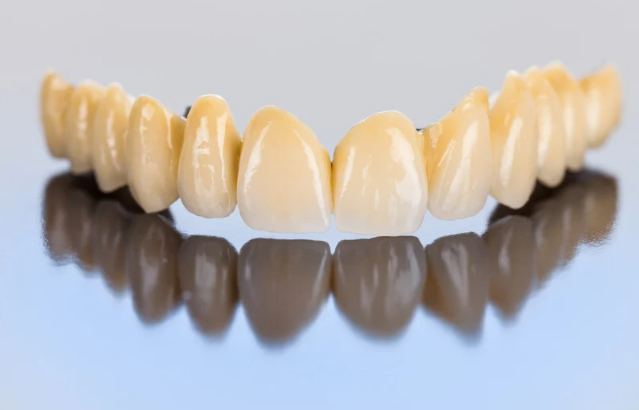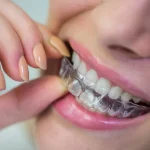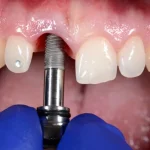The Complete Guide to Dental Bridges: Types, Costs, Procedures, and Long-Term Care
Tooth Gaps Don’t Just Sit There, They Shift Everything
If you’ve lost a tooth recently, you’ve probably done what most people do: ignore it and hope it won’t cause issues. Especially if it’s tucked out of sight. But tooth loss is never passive. The gap may seem like a minor inconvenience now—something you can “deal with later”—but behind the scenes, things are already shifting.
Your neighboring teeth start drifting, like chairs edging toward an empty space. Your bite pressure changes. That crisp apple crunch? Now it’s slightly off. And with time, jawbone loss can subtly change your facial profile. It’s gradual. It sneaks up on you.
That’s where a dental bridge comes in—not as a patch job, but as a structured, thoughtful solution. One that restores form, bite function, and peace of mind. Especially for working adults who don’t have the time for repeat issues.
Which Dental Bridge Fits You Best? Understanding the Options
Dental bridges aren’t just a fix—they’re a commitment to oral stability. The type that works for you depends on more than budget. It’s about anatomy, daily demands, and longevity.
Traditional Bridges
The go-to model. This design anchors the replacement tooth (called a pontic) between two healthy teeth, both of which are capped with crowns. Strong, reliable, and best for folks with healthy anchor teeth on both sides. But there’s a trade-off: the adjacent teeth are reshaped, which permanently alters their structure.
Cantilever Bridges
Only have one tooth next to the missing spot? A cantilever bridge uses a single anchor. Less common, but useful for low-pressure areas like front teeth. Not ideal for back molars—too much bite force can create strain.
Maryland (Resin-Bonded) Bridges
These are minimal and efficient—almost like a dental “hack.” A metal or porcelain framework is bonded behind the adjacent teeth, no crowns needed. It’s less invasive and conserves tooth structure. That said, it’s not built for the grind of molar duty. Great option if you’re looking for something lower-impact but still functional.
Implant-Supported Bridges
Think of this as the Cadillac of bridges. It skips natural teeth altogether and anchors directly into the jawbone with titanium posts. Although these are strong, durable, and bone-friendly, they are more expensive initially and take longer to recover.
It makes more sense to see a dentist who assists you in choosing the option that best fits your lifestyle rather than just attempting to sell you the most expensive one in a place like Detroit, where people value sound judgment and straightforward care.
The Procedure: What You’ll Actually Go Through
Let’s say you’ve made the call. You’re ready for a bridge. But what exactly does that involve?
Initial Consultation and Imaging
You’ll start with a comprehensive evaluation—X-rays, 3D imaging, maybe a scan using an intraoral camera. This part is clinical but also conversational. You’re laying the groundwork together with your dentist.
Prep and Temporary Placement
For traditional and cantilever bridges, the next step is tooth preparation. That means reshaping the anchor teeth slightly so the crowns can fit securely. Once prepped, a temporary bridge is placed. It does the job while your permanent version is custom-made in a lab. Most people can return to work or meetings the same day.
Final Fitting and Cementing
The final bridge arrives and is tested for color, fit, and bite. Adjustments are made. When it feels just right, your dentist cements it in place. There’s usually a moment of clarity when everything aligns—you bite down, and suddenly, things feel balanced again.
Adjustment Period
You’ll need a few days to get used to it. Some sensitivity is normal. Stick to soft foods, keep it clean, and give your bite time to recalibrate. A follow-up visit checks that everything’s settled properly.
Let’s Talk Cost—And What You’re Really Paying For
You probably guessed this already: not all bridges are priced the same.
- Traditional or Cantilever Bridges: $1,500–$3,500
- Maryland Bridges: $1,000–$2,500
- Implant-Supported Bridges: $4,000–$15,000+
But price isn’t just about the physical piece—it reflects craftsmanship, materials, lab work, and your dentist’s expertise. Zirconia costs more than porcelain. A highly skilled provider costs more than a discount clinic—and often, that’s a cost worth paying.
Insurance Coverage
Most dental insurance plans cover 40–50% of bridge procedures, usually categorized as “major services.” But you’ll need to check for waiting periods, annual limits, and pre-approval requirements. Don’t assume coverage—confirm it. A good provider will walk through it with you, line by line.
Financing Options
If cost is a concern—and for most people, it is—ask about monthly payment plans. Many Detroit clinics offer CareCredit or partner with third-party lenders. You can also use your HSA or FSA to ease the financial load.
Daily Maintenance: Keeping Your Bridge Strong
A dental bridge isn’t complicated to maintain—but neglect it, and things fall apart fast.
Brushing & Flossing
Twice-daily brushing is essential. Use a soft-bristle brush and clean around the crowns gently. Under the bridge? That’s trickier. Use floss threaders or a water flosser to get beneath the pontic. If you let food build up underneath, bacteria will move in.
Food Awareness
Hard candies, ice, caramel—you know the usual suspects. Chew with common sense. It’s not about restriction; it’s about avoiding problems that will cost more to fix than prevent.
Regular Checkups
Visit your dentist every six months. These aren’t just cleanings—they’re quality checks. Your dentist will monitor the fit, inspect the supporting teeth, and look for any signs of wear or hidden decay.
How Long Will It Last?
With proper care, a dental bridge typically lasts 10 to 15 years. Some even reach the 20-year mark. But if supporting teeth develop issues—or if your oral hygiene slips—its lifespan shortens.
Signs it may need replacing:
- Looseness or shifting
- Pain when chewing
- Visible wear on the crowns
- Gum recession or bleeding nearby
And remember: if you catch issues early, small adjustments can extend the life of your bridge.
Final Thoughts: What’s the Real Value of a Bridge?
For Detroit professionals, decisions have to be practical. You need your bite to work as hard as you do. Dental health shouldn’t be a hindrance to managing a busy household, working on the line, or conducting client meetings downtown.
More than only your ability to chew is restored with a dental bridge; it also levels your bite, maintains your facial structure, and makes it easier for you to speak and smile. And that type of confidence is worth every effort in a community that values hard work, stability, and craftsmanship.
A dental bridge might be the next wise step if you’re prepared to close the gap—not just with a tooth, but with actual, long-lasting functionality.
More News /Article
- Trump administration shares new moves to dismantle more of the Education Department
- Brian Walshe, charged with murdering wife, pleads guilty to disposing of her body
- Baltimore bridge collapse that killed 6 was 'preventable,' federal investigators say
- Trump with MBS on Khashoggi: "A lot of people didn't like" him






